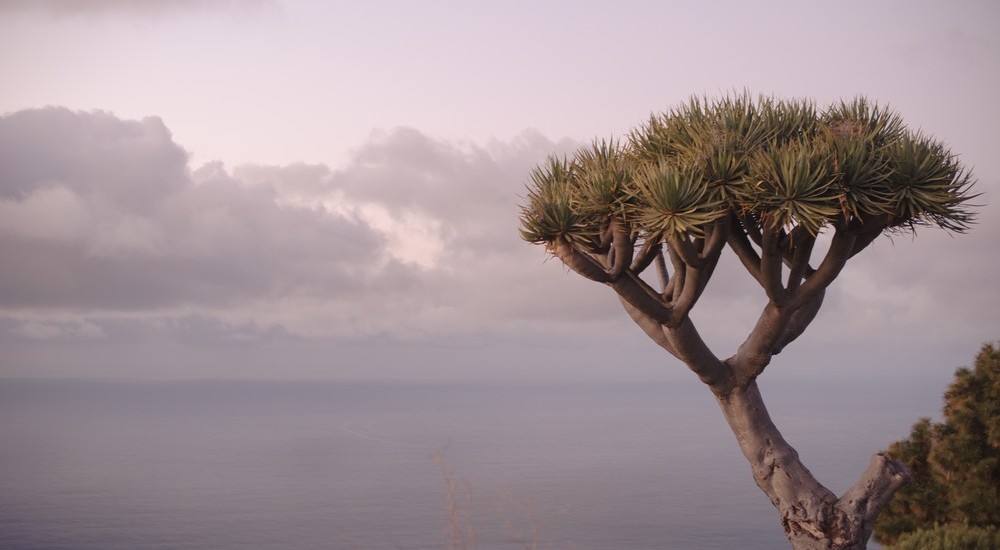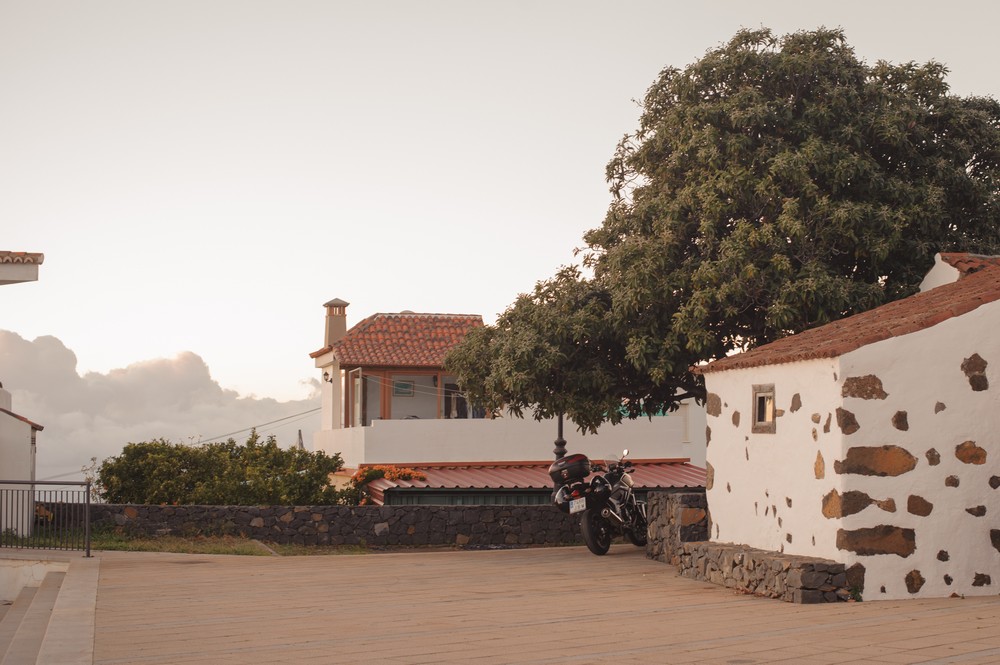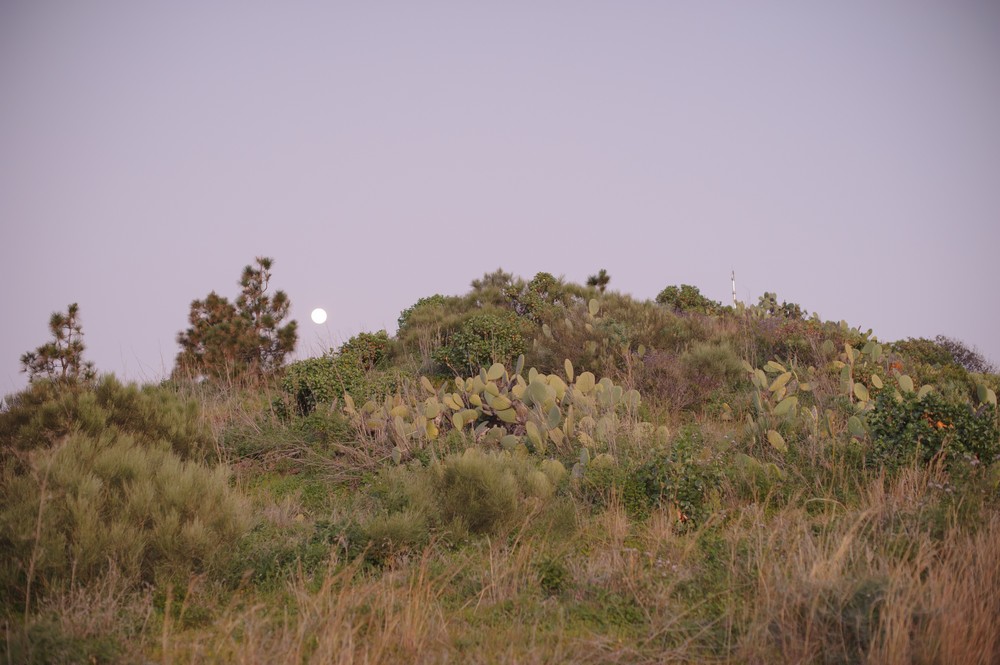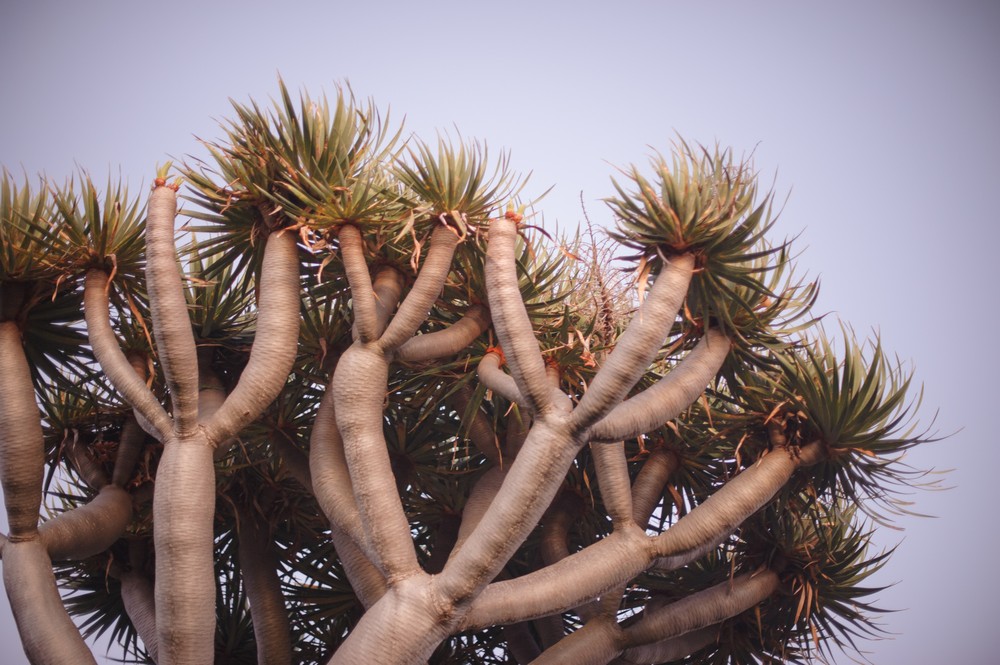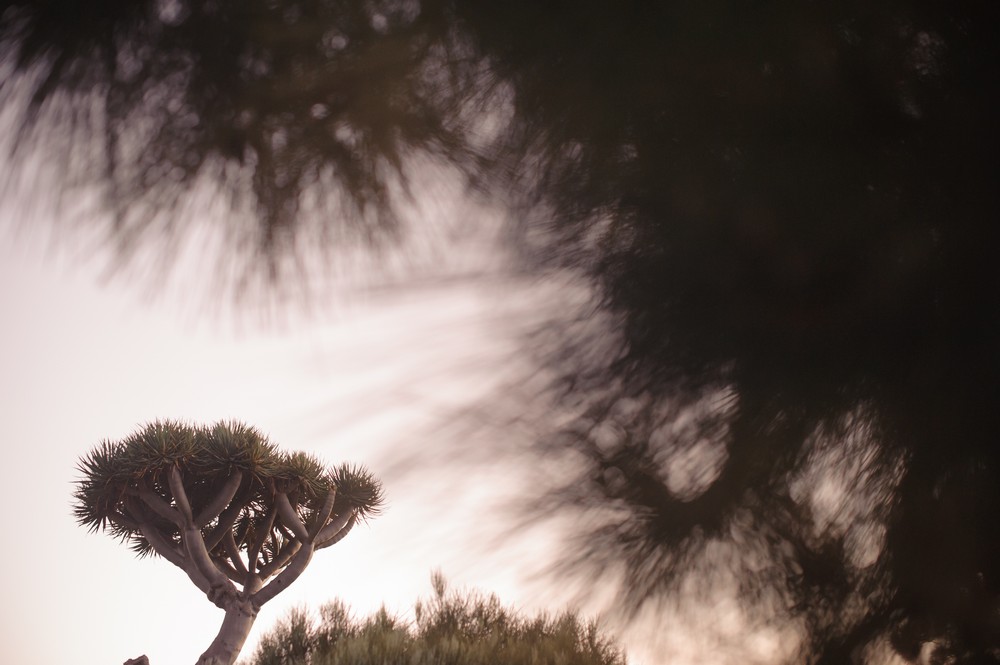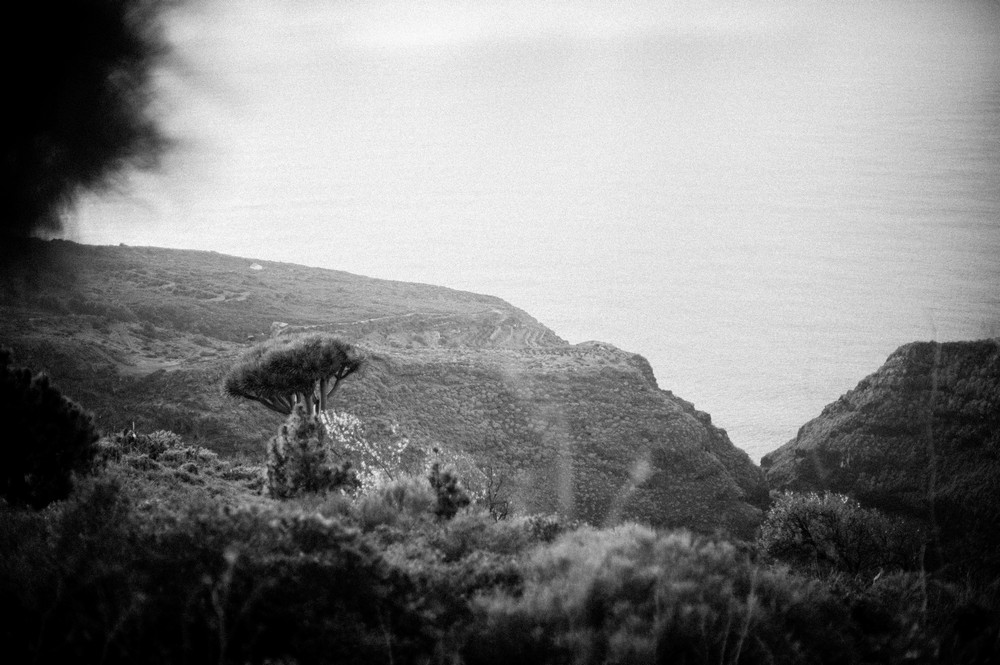The Canary Island Dragon Trees, Dracaena draco, are native to the islands as well parts of Africa and the Azores. They are strange and beautiful things. The biggest and oldest living “drago” as the locals call them, is about 300 years old and can be found in northwest Tenerife.
SEE
The dragon trees grow slowly and often stand alone, except for at Buracas, just below the village of Las Tricas, where a number of them grow closer together. I wouldn’t exactly call it a forest, but seeing them in such a stunning setting is worth the scenic drive. If you’re in the area early in the year, you may get to see the almond trees in blossom too: pretty pinks and white. Also worth mentioning is the old cereal mill and the quaint traditional church, Iglesia De Nuestra Señora de Carmen.
ARRIVE
Once on the LP-1, follow the road signs to Villa de Garafia and turn off onto the LP-114. Once you get to Kiosco El Rincon, park here and take a look at the information sign and hike down to Buracas on the GR 130 or drive down the hill towards the sea. Hiking might be easier because there is very little or no road signage relating to the trees. If you’re driving, follow the signage, if you can spot it, to the windmill (El molino). If you’re lost, ask for directions as locals and tourists alike can be very helpful.
EAT
The Kiosco has amazing views over the valley and sea. It looks like they offer a few things to eat, but as it was almost evening when I arrived, I wasn’t able to investigate. Just across the road from the church is a Bar/Restaurant that looks cosy and stays open later.
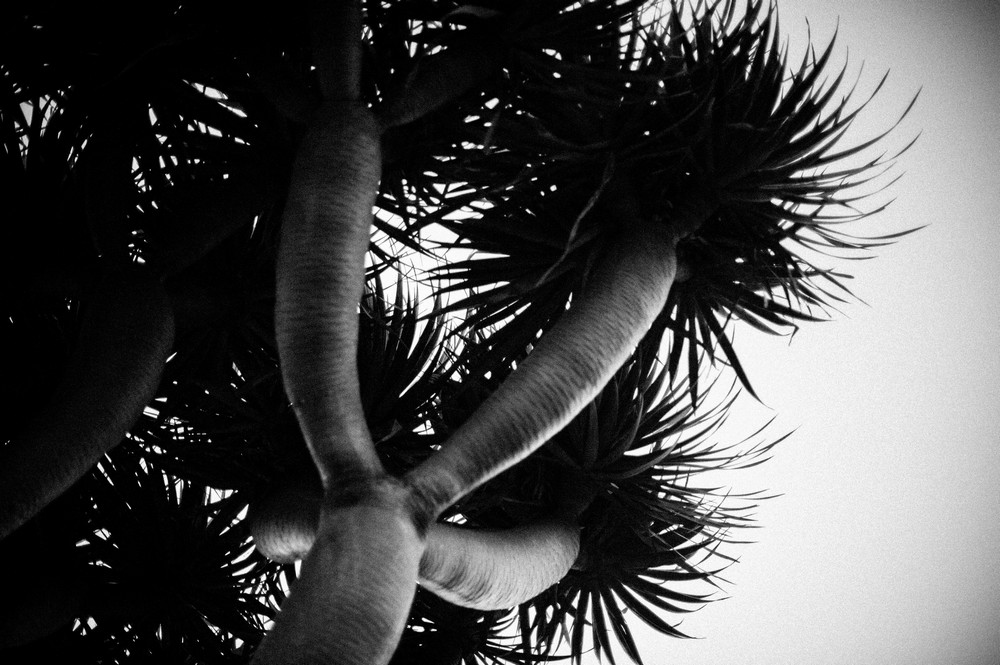
In parts of Yemen, you can find a different but similar looking tree, Dracaena cinnabari. Those are actually Dragon Blood Trees, so named because of their red sap.

